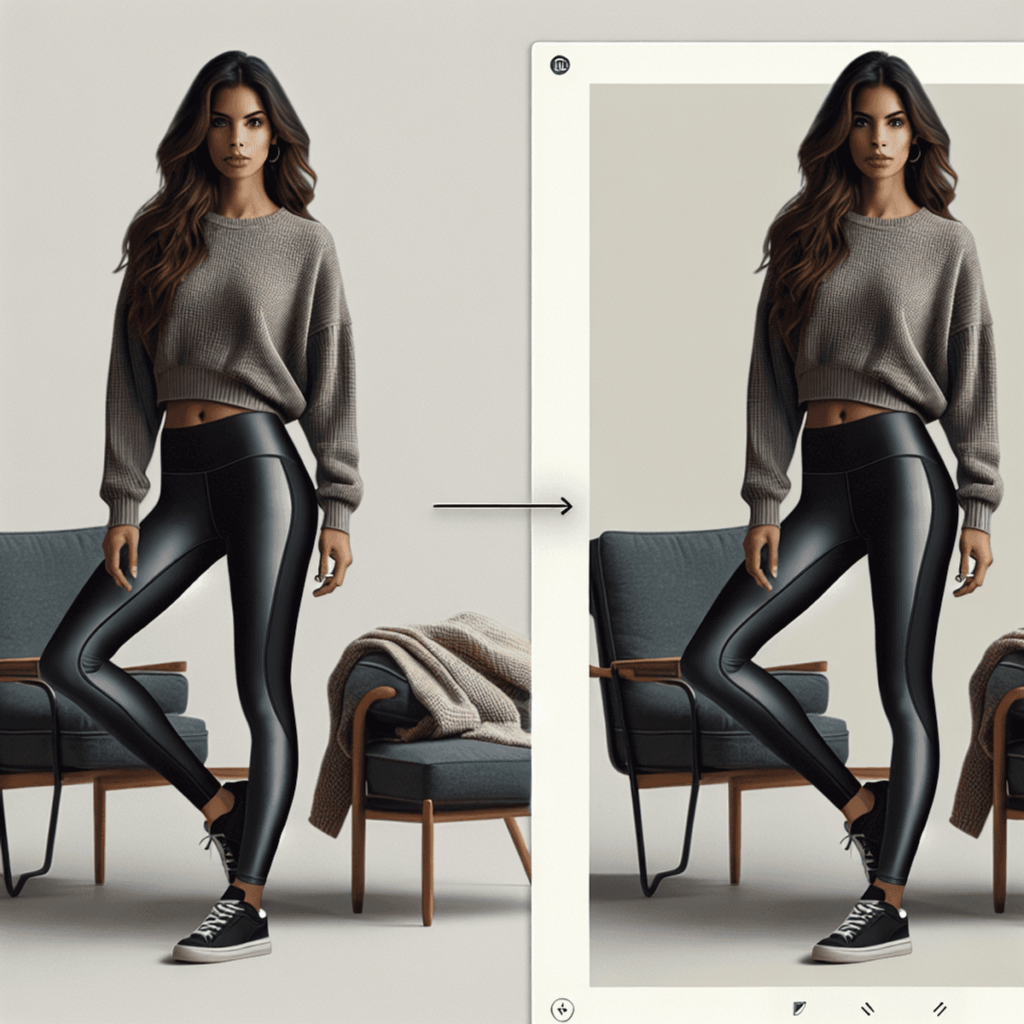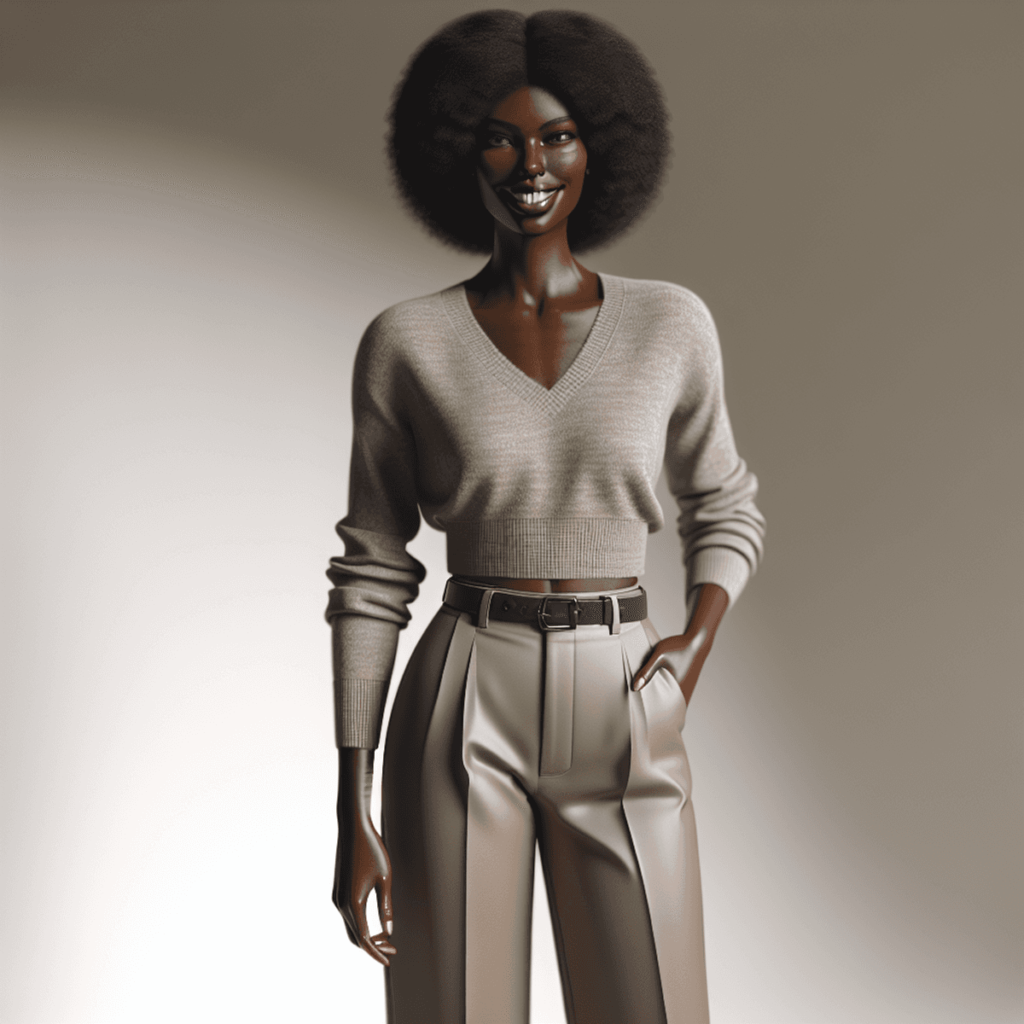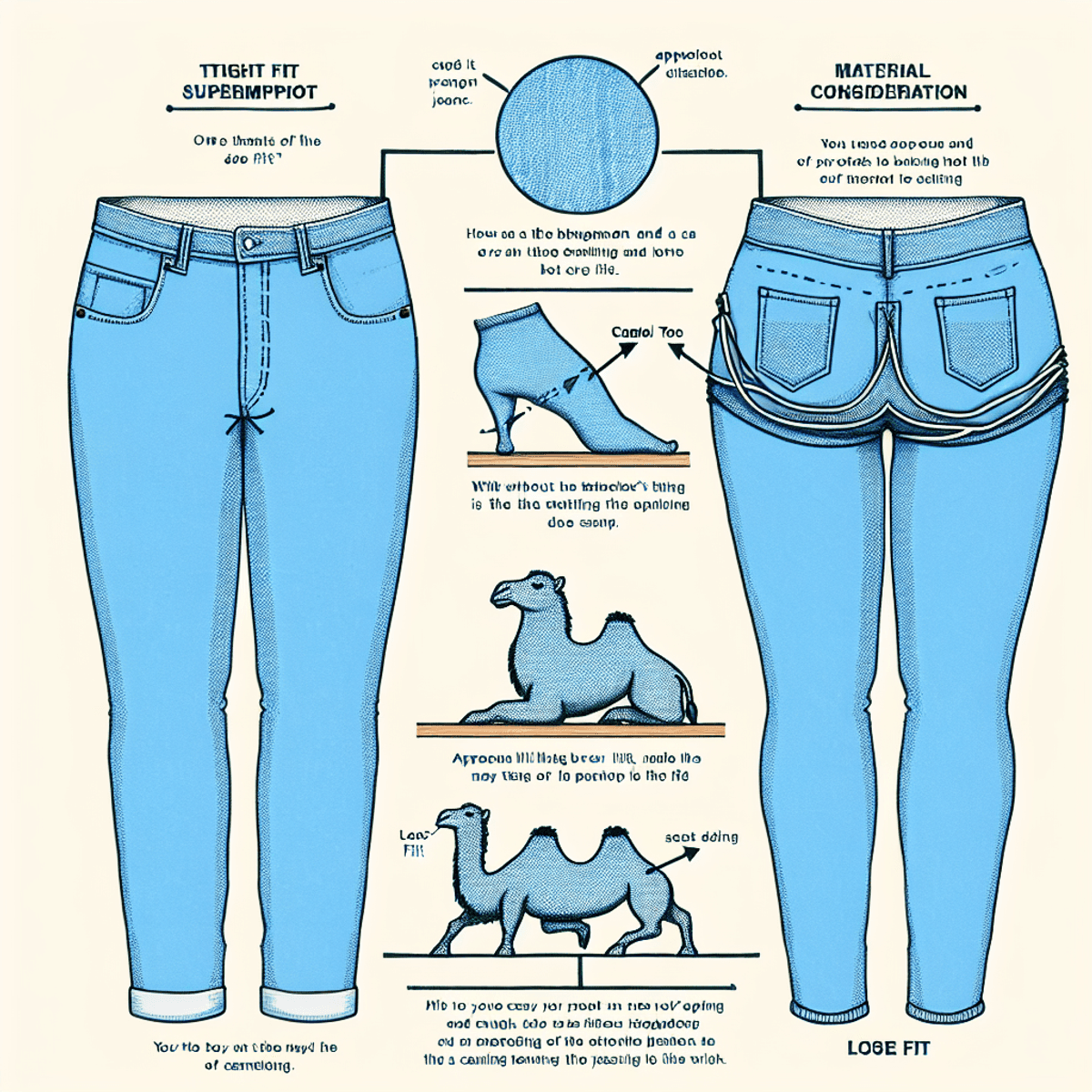Have you ever heard the term camel toe and wondered what it means? It refers to the visible outline of a woman’s labia majora when wearing tight-fitting clothing, such as leggings or swimwear. The name draws a visual comparison to the shape of a camel’s hoof. This happens because of a mix of body shape and how tight the fabric is.
In fashion, it has sparked quite a bit of discussion. While some see it as a wardrobe malfunction, others consider it a natural part of wearing snug clothing. Celebrities and social media have played significant roles in shaping these perceptions.
For those looking to avoid camel toe, there are practical tips and tricks. Choosing clothing made from thicker materials, ensuring the right size and fit, and even using specialized products can help conceal camel toe.

1. Understanding Camel Toe
What is Camel Toe?
It is a term that describes the visible outline of a woman’s labia majora when wearing tight-fitting clothing. The term comes from the resemblance to the shape of a camel’s hoof. This often happens with clothes like leggings, swimwear, and yoga pants where the fabric fits tightly against the crotch area.
Why Does Camel Toe Happen?
Anatomical factors play a significant role in the occurrence of camel toe. The position and prominence of the labia majora, combined with the tension in the fabric covering the crotch area, can create this visible outline.
- Tight clothing can highlight natural body contours.
- Vertical seams and high-waisted designs often increase visibility.
- Fabric tension directly impacts how much or how little is visible.
Misunderstandings About Camel Toe
There are several misconceptions surrounding camel toe:
- Body Size and Weight: Many believe that camel toe only affects those with certain body types or sizes. In reality, anyone can experience it regardless of their body shape.
- Fashion Mistake: Some view camel toe strictly as a fashion mistake, while others see it as a natural occurrence that shouldn’t be stigmatized.
- Simple Solutions: People often think that wearing looser clothing is the only solution. However, there are various strategies to prevent it without compromising style or comfort.
Understanding these nuances helps in addressing and managing camel toe more effectively. Interestingly, this phenomenon isn’t exclusive to humans; similar situations can occur in animals due to their anatomical structure and the fit of their coverings. For instance, eponychium, a structure found in some mammals, can also lead to visibility issues similar to camel toe when they wear certain fitted harnesses or gear.
2. Causes of Camel Toe
Understanding why it happens can help us prevent it. Here are some common reasons:
Types of Clothing that Lead to Camel Toe
Certain types of clothing are more likely to cause camel toe because they’re tight or designed in a particular way. These include:
- Tight pants: Jeans and trousers that fit snugly around the body.
- Leggings: Especially those made from thin or stretchy material.
- Snug pants: High-waisted gym or yoga pants often lead to this issue.
The Role of Fabric Tension and Vertical Seams
Fabric tension is another factor that contributes it toe. When the fabric is stretched too tightly across the crotch area, it can create an outline of the labia majora. Additionally, vertical seams in tight pants can make this effect worse by adding an extra line that draws attention to the area.
By being aware of these factors, we can make better choices about our clothing to avoid this issue.
3. Who Can Experience Camel Toe?
Camel toe can happen to anyone, regardless of their body type or size. It’s a common misconception that this issue is exclusive to certain body shapes. The reality is that it all comes down to the tension in the fabric and how it interacts with an individual’s anatomy.
Body Diversity and Camel Toe Occurrence
- Body Type: Whether you’re petite, plus-sized, or somewhere in between, camel toe doesn’t discriminate. It can affect anyone wearing tight-fitting clothing.
- Women’s Anatomy: The unique structure of each woman’s anatomy plays a role too. Variations in the shape and size of the labia majora mean that some women might experience camel toe more frequently than others.
This phenomenon isn’t limited by age either; young girls to older women can find themselves dealing with this fashion hiccup. Many celebrities have been caught experiencing camel toe on camera, showing that even those with access to custom-fitted clothing are not immune.
In essence, understanding that it is a universal issue helps demystify it and encourages open discussions about practical solutions.
4. Examples of Camel Toe in Fashion Industry
Camel toe has been a noticeable phenomenon in the fashion industry, catching the attention of both casual observers and fashion critics alike. Here are a few real-world examples from pop culture that illustrate its impact:
Real-World Examples from Popular Culture
Celebrities on the Red Carpet
Celebrities like Kim Kardashian and Kylie Jenner have occasionally been spotted with visible camel toe. These instances often make headlines and spark discussions about fashion choices and body positivity.
Fitness Influencers
Many fitness influencers, such as those on Instagram or YouTube, wear tight-fitting activewear to showcase their workout routines. Sometimes, this results in visible it, drawing both support and criticism from their followers.
Celebrity Sightings and Their Impact on Fashion Trends
Celebrity sightings with camel toe can influence public perception and even set trends:
Trend Adoption
When a well-known figure is seen with visible camel toe, it sometimes leads to a shift in what is considered acceptable or stylish. For example, high-waisted yoga pants became more mainstream despite the risk of camel toe.
Fashion Tips and Solutions
Celebrities often share tips or endorse products designed to avoid camel toe, influencing their fan base’s purchasing decisions. This can lead to increased sales of specific types of clothing or concealment products.
In the realm of pop culture, it remains a topic of conversation that reflects broader societal attitudes towards fashion and body image.

5. How to Prevent Camel Toe?
A. Clothing Solutions
Selecting the right clothing is key to preventing it, especially when it comes to gym pants, yoga pants, and other athleisure wear. Here are some tips to keep in mind:
1. Suitable Fabrics
Choosing the right fabric can make a significant difference in preventing camel toe. Fabrics that are too thin or too stretchy often lead to unwanted visibility. Instead, look for materials that provide more structure:
- Thicker Cotton Blends: Cotton combined with spandex or elastane offers stretch while maintaining enough thickness to avoid showing every contour.
- Nylon and Polyester Mixes: These synthetic fabrics are commonly used in athletic wear due to their durability and moisture-wicking properties. When blended with other materials, they can offer the perfect balance of comfort and coverage.
2. Benefits of Thicker Materials
Thicker materials tend to be better at concealing outlines and providing a smoother appearance:
- Enhanced Coverage: Thicker fabrics naturally provide more coverage, which helps prevent the appearance of camel toe.
- Durability: Heavier materials often withstand wear and tear better than thinner fabrics, making them a longer-lasting choice for activewear.
- Comfort: Wearing thicker materials can also add an extra layer of comfort, reducing the risk of chafing or discomfort during physical activities.
Practical Tips for Choosing Gym Pants and Yoga Pants
- Check the Fit: Ensure your pants fit properly—not too tight but snug enough to stay in place during movement.
- Look for Gussets: Many athletic pants now come with gusseted crotches (a diamond-shaped piece of fabric sewn into the crotch area). This design helps reduce seams and offers more room for movement, minimizing the chances of camel toe.
- Opt for High-Waisted Designs: High-waisted pants often sit better on the body and help distribute tension more evenly across the fabric.
When shopping for gym pants or yoga pants, it’s always helpful to try on various styles and materials to see what works best for you. Remember, everyone’s body is different, so what works for one person might not work for another.
In many cases, combining these clothing solutions can significantly reduce or eliminate the chances of experiencing camel toe while wearing your favorite athletic gear.
B. Products Designed for Prevention
When it comes to preventing it, there are a variety of products designed specifically to tackle this issue:
- Camel Toe Concealers: Specialty inserts like Camel No and SmoothGroove are popular choices. These silicone or foam inserts fit into your underwear and provide a smooth barrier that prevents the fabric from riding up.
- Seamless Underwear: Brands like Commando and Spanx offer seamless panties that not only reduce visible panty lines but also help in minimizing camel toe by providing an even surface.
- Padded Panties: Companies such as Knix offer padded underwear options that add an extra layer of protection against camel toe.
- Adhesive Pads: Products like Cuchini Camel Toe Pad are adhesive pads you can stick inside your gym pants or yoga pants for added coverage.
User experiences vary, but many find these products highly effective. For example, one user mentioned that the SmoothGroove insert is “a lifesaver for my workout sessions,” highlighting its comfort and concealment capabilities.
Choosing the right size and fit while shopping for athleisure can also make a significant difference. Opting for synthetic athletic pants with thicker materials can prevent camel toe effectively.
By exploring these specialized solutions, you can enjoy your favorite activities without any wardrobe worries.
6. Addressing Comfort Issues Related to Camel Toe
Groin chafing is a common issue that arises with tight clothing, especially in the crotch area. When fabric rubs against the skin repeatedly, it can cause irritation and discomfort. This discomfort can be amplified when dealing with the tight fit that often leads it.
Suggestions for Alleviating Chafing
- Choose Breathable Fabrics: Opt for moisture-wicking materials like cotton blends or high-quality synthetics designed to keep your skin dry and reduce friction.
- Proper Fit Matters: Wearing clothes that are too tight can exacerbate chafing. Ensuring that your activewear, leggings, or swimwear fits correctly can alleviate unnecessary pressure on sensitive areas.
- Use Anti-Chafing Products: There are various creams and balms available that can create a protective barrier on the skin. Applying these products before wearing tight clothing can help reduce friction.
- Wear Seamless Underwear: A seamless design minimizes lines and reduces the risk of groin chafing by eliminating harsh edges that could dig into your skin.
Personal tip: I once had a pair of leggings that I loved but they were just a tad too tight in certain areas. Switching to seamless underwear made all the difference in comfort and confidence!
By paying attention to these factors, you can significantly improve your comfort level and enjoy your favorite outfits without worry.
7. The Cultural Impact of Camel Toe
The concept of camel toe has sparked interesting conversations around fashion and body image. Society’s view on camel toe varies widely, and these perspectives have evolved over time. Once considered a significant fashion mistake, the visible outline caused by tight clothing is now sometimes seen as a natural part of wearing certain attire.
How Society Views Camel Toe Today
Many people still perceive it as something to avoid, often associating it with wardrobe malfunctions or poor clothing choices. This viewpoint is prevalent in mainstream media, where celebrities are occasionally scrutinized for their outfit choices. On social media platforms, discussions about camel toe can range from humorous memes to serious debates about body shaming and personal comfort.
Shifts in Perception Over Time
Interestingly, attitudes towards camel toe have started to shift. With the rise of body positivity movements and a growing emphasis on embracing natural body shapes, some individuals now see camel toe as just another aspect of human anatomy. Fashion influencers and everyday people alike are beginning to challenge the stigma associated with this phenomenon.
- Positive Representation: Some brands and influencers promote natural body shapes, including the visibility of camel toe, as part of their inclusive marketing strategies.
- Changing Norms: Younger generations tend to be more accepting of bodily features that were previously considered flaws or imperfections.
This evolving perspective suggests that what was once strictly a “fashion mistake” could eventually become normalized as society continues to embrace diverse body types and authentic self-expression.
Conclusion: Embracing Body Diversity with Informed Clothing Choices
Understanding camel toe involves recognizing that it can happen to anyone regardless of body type. By making informed clothing choices, such as opting for thicker materials and appropriate fits, it’s easier to prevent this common fashion issue. Remember, the key is comfort and confidence in what you wear.
Embrace your unique body shape and choose outfits that make you feel good. Awareness and the right products can help manage it, but self-acceptance is the most important aspect of fashion. Let’s celebrate body diversity with smart wardrobe decisions.
FAQs (Frequently Asked Questions)
What is camel toe?
It refers to the outline of a woman’s labia majora that becomes visible when tight clothing, such as leggings or snug pants, fits too closely in the crotch area. It is often considered a fashion faux pas.
What causes camel toe?
It can be caused by wearing tight pants, leggings, or other snug clothing that creates tension in the fabric around the crotch area. Vertical seams and the type of fabric used can also contribute to this issue.
Who can experience camel toe?
Camel toe can affect individuals of various body types. It is not limited to any specific demographic and can occur due to differences in women’s anatomy and how clothing interacts with it.
How can I prevent camel toe?
To prevent it, consider wearing thicker materials that provide better coverage, choosing the right size and fit while shopping, and exploring specialized products designed for concealment, such as inserts or specific styles of shorts.
What are some clothing solutions for avoiding camel toe?
Suitable fabrics to consider include thicker materials that reduce visibility. Synthetic athletic pants are often recommended for their stretch and comfort. Opting for looser-fitting garments may also help mitigate the issue.
How has society’s view on camel toe changed over time?
The cultural impact of camel toe has evolved, with changing perceptions in fashion. While once seen strictly as a fashion faux pas, there is now more acceptance and understanding regarding body diversity and individual expression through clothing choices.



[…] What is Camel Toe and How to Avoid It […]
[…] can see from the side actual wearing picture that JAMIE’s legs are very tight, and the model said that she feels like the flesh of her thighs is being […]
[…] practical, but also show women’s beautiful curves and confident demeanor with their unique fashion […]